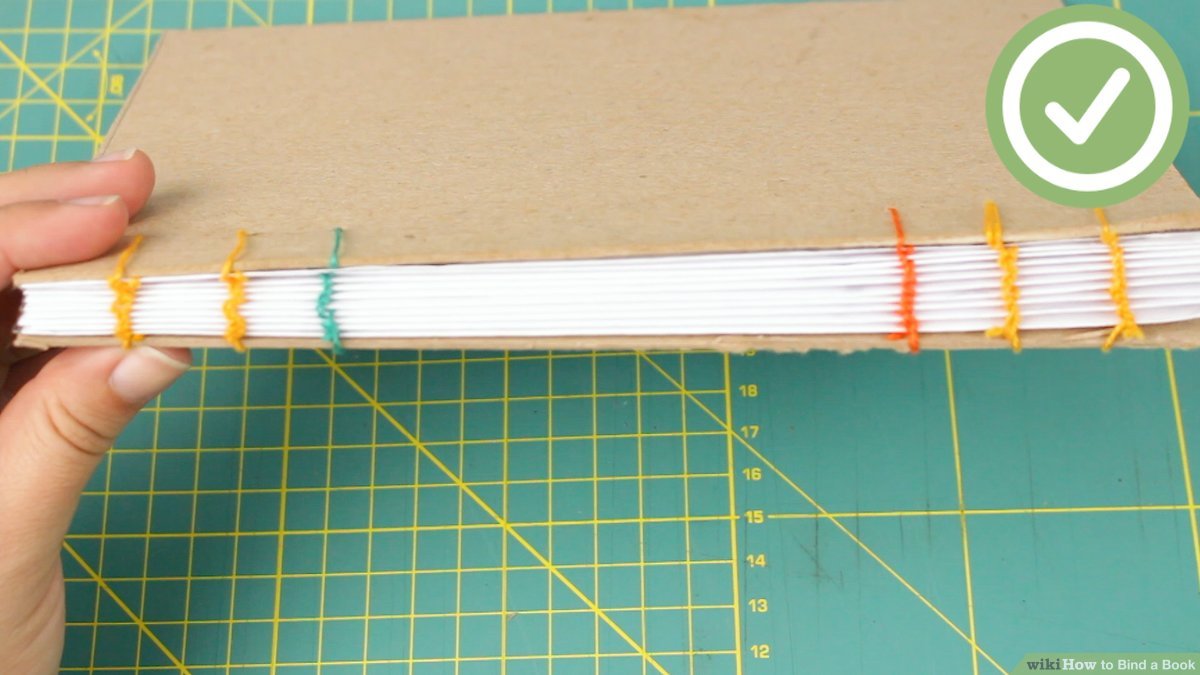There are many methods for binding paper into a book. Stapling, Coptic, Spiral, Thread stitching, and more are all options for binding your paper into a book. Learn how to bind your paper in this article! Here are some tips for binding your paper into a book. These methods are very simple and inexpensive. Just follow these steps for a beautiful book. You’ll be amazed at the results!
Stapling
Staples are a great way to make your book thicker. You need to make sure that the staples are long enough to reach the middle of the pages of the book. You can use a standard desktop stapler for this, but it might not be strong enough for a book with standard 8.5-by-11-inch pages. If you don’t want to spend the money on a special stapler, you can buy some aluminum rectangular tubing and supplement your cheap $2 dollar store stapler with.
To staple the paper into a book, start by folding the pages in half. Then, use a large pencil eraser to keep your grip. When stapling, align the spine of each folio with the stapler head. Press the stapler head down with your palm, maintaining control of the process. Once the staple head has penetrated the sheet, bend it slightly and pull it out of the book.
Coptic binding
Coptic binding allows the pages of a book to lie flat or on an angle, allowing the spine and colorful threads to be seen. A coptic bind is a great introductory form for those new to bookmaking and offers many opportunities for creativity and experimentation. Beginners can easily master the basics of coptic binding by watching a video tutorial. Learn how to bind paper in coptic stitch in this free tutorial from Linda Tieu.
The first known Coptic binding technique was based on the chain stitch. Unlike other bookbinding techniques, Coptic binding does not require any glue. Unlike other bookbinding methods, Coptic stitching requires no gluing, and the book can be turned 360 degrees in any direction. This ancient method of bookbinding evolved alongside the use of paper and parchment books in Egypt. Today, Coptic bookbinding remains a highly popular method for making handmade notebooks.
Spiral binding
If you’re wondering how to spiral bind paper into a book, you’ve come to the right place. While spiral bound books are great for homeschooling children, they are also a cost-effective way to get your writing projects finished. You can customize them with a cover and lined paper to meet your own unique needs. You can also use them for coloring books, as they allow you to look at one page at a time and open them to a two-page spread.
Spiral-bound books are also easy to unbind and add/remove pages without reprinting the entire document. You can also replace the spiral coil easily, but you should be very careful not to damage it. If you have a book that needs a page change, you might be better off with a ring binder, which will allow you to easily remove and replace individual pages.
Thread stitching
Thread stitching is a classic method of binding paper into a book. It involves tying threads through the spine of each folded sheet of paper to create individual booklets. These booklets are then stacked and knotted to form a book block. A cover is then stitched onto the book block with glue. Thread stitching is considered one of the most durable types of binding. Production is automated, but is still quite laborious when producing books with large page counts.
The thread used for thread stitching a book is usually a blend of different filaments called ‘threads’. Depending on the type of book, threads may be made from cotton, linen, nylon, terylene, or a mixture of the three. Threads are available in a variety of thicknesses, designated by a number. Threads with too thin thread will not have sufficient swelling on the spine and will cause creases on the inner margin. The thicker thread, Number 50, is often made with four cords of Number 16.
Ring eyelet stitching
There are two main styles of binding a book – ring eyelet stitching and staple binding. Ring eyelet stitching is an option for binders that are made of fabric and features a hole in the middle. Ring eyelet stitching makes it possible to file notebooks in ring binders without using hole punching. Stapling is an option for binders made of plastic, but it can make a book a lot harder to stack.
A simple version of this technique involves sewing the paper into a book. To make a book using this technique, you’ll need several sheets of paper (each sheet makes four pages), a cover sheet, a stapler, and a piece of thread. Once you have your materials in place, simply fold one sheet in half and place it inside another sheet. Unfold the piece so that the folded edge is on the top.

